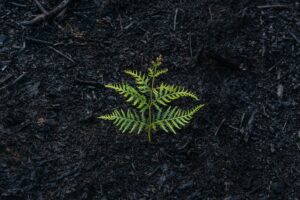Adventurer, travel writer and our correspondent Ian Packham reflects back on his journey across Pakistan, exploring what his expedition says about our approach to the climate crisis and where we go from here.
Despite all the imagery, I’ve always found the climate crisis a difficult subject to visualise. The statistics might have told me one thing, but my imagination simply couldn’t bring alive more carbon dioxide in the atmosphere or a rise in temperature of 1.5°C.
That’s probably why broadcast images of the impact of climate change: drought, floods, hurricanes and wildfires manage to make such an impact, at least in the short term.
The climate crisis can seem too big for any individual to do anything about, leaving it up to our elected representatives to do the right thing for the future, even if it isn’t necessarily the right thing for the present. It’s not a position politicians like being in.
The danger of undertaking a journey spanning some 1,200 miles (3,000 km) is similar. It doesn’t come, despite what you might think, from hard-line religious fanatics or anti-western sentiment. It comes from seeing too much. Too many melting glaciers, too many fields devastated by flooding and too many waterways clogged with plastic waste.
But the effects of the climate crisis can be very personal. Beyond the big numbers – of 33 million displaced by Pakistan’s floods for instance – are at best lost hopes and dreams. At worst lost lives and livelihoods.
Pakistan was chosen for my journey because of its varied landscapes. In other words, the country’s people face every impact of climate change going, and are responsible for causing none of them. It could have been Cuba, Nigeria, or Bangladesh. Few nations are now safe from the impact of the climate emergency. Pakistan represents them all.
Travelling across Pakistan has been energy sapping at times and emotionally draining. To see first-hand the impact of climate change on a country and its people, in the here and now, has been fascinating and depressing in equal measure.
In my first post, from the Karakorum, I highlighted the fact that a 1.5°C rise in global temperatures would likely wipe out the region’s 7,000 glaciers, and the lives and livelihoods of the millions who depend on them. Now the ‘keep 1.5 alive’ pledge is close to dead. Formal reports make it clear that limiting global temperature rises to this degree is now near to impossible. Quietly, climate scientists have been saying this for some time, but didn’t want to run the risk of triggering a ‘what’s the point’ response from politicians and the public.
We can learn from Pakistan. Lying within Asia’s earthquake zone, it’s a country used to dealing with natural disasters. It now finds itself at the forefront of the fight against climate change through no real fault of its own.
Considering it in the round, Pakistan is dealing admirably well with its limited resources, although as the floods of August 2022 have shown, there is only so much and so far any individual country can go.
The uncontrolled wildfires of Australia and the US prove that just as well, while the growing economic might of China and India did not stop either of these nations facing flooding and heatwaves respectively.
When it comes to a global problem like the climate crisis, it’s clear only a united international response can work. It’s also clear there is no silver bullet – no single thing we can do is going to solve the problem. It’s going to take effort, and just about everything we’ve got in our arsenal, from planting more trees to adapting the way we live. Now is not the time to give up, but to double down on our efforts, which those that lead us seem to be slowly coming to realise too.
If I were to sum up my experiences into a few words they might be sun, water and trees. Each plays a significant part in the world which swirled around me and in the battle at hand to minimise the impact of the climate crisis on some of the world’s poorest people.
If my travels through Pakistan from north to south, across mountains, plains, desert, wetland and coast have highlighted one overarching fact it is this: the natural world never used to need us. Now it does. And through the flood defences, shade and jobs it provides for us we need nature just as much, more now than ever. We must do everything we can to preserve what’s left, and we’ve got no time to lose.
Revisit Ian Packham’s previous dispatches from Pakistan:
Karakorum – The climate change frontline
New lakes form another risk in Karakorum
Is sustainable development possible?
The environment in Pakistan’s cities
Green shoots in Pakistan’s climate adaptation and resilience
Encountering the deadly Indus floods head on
Why our ancestors had it right all along















